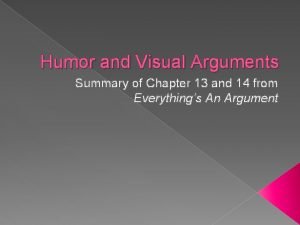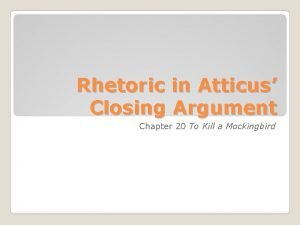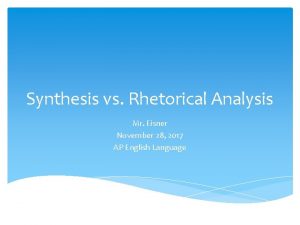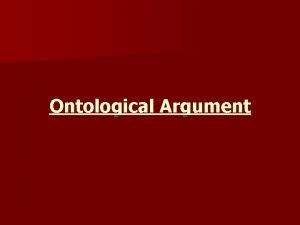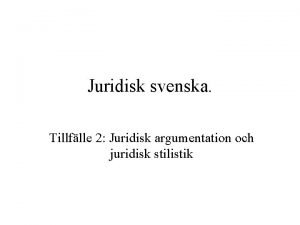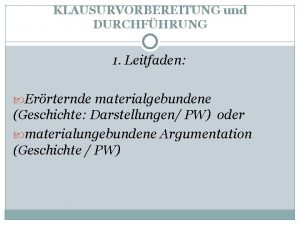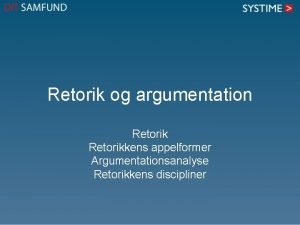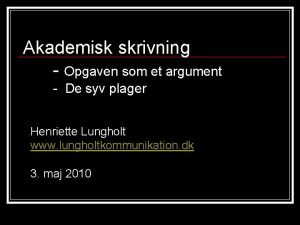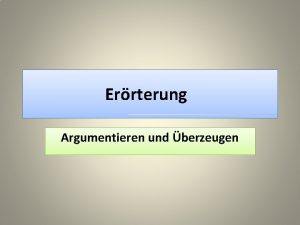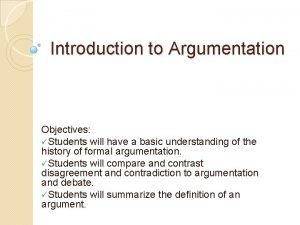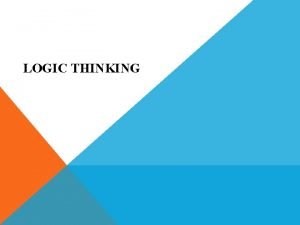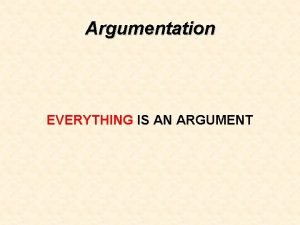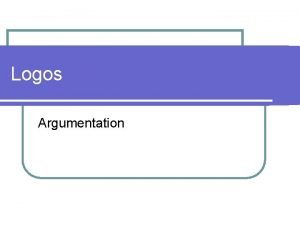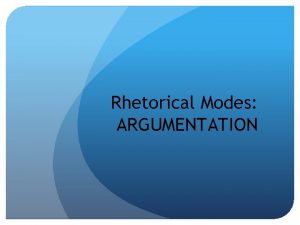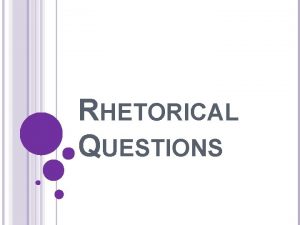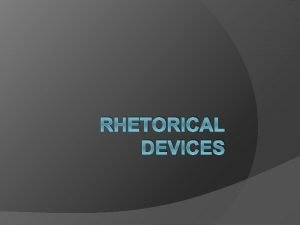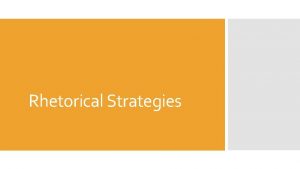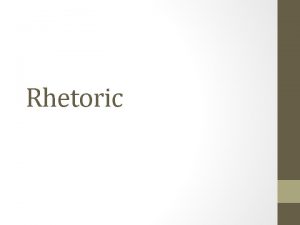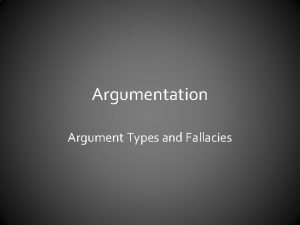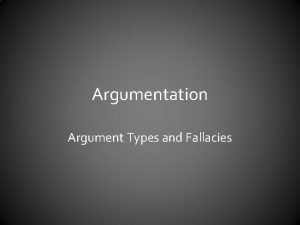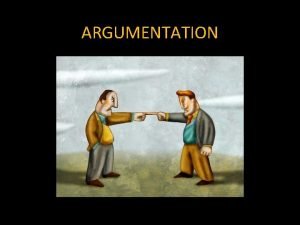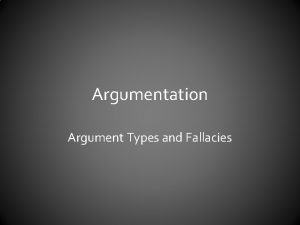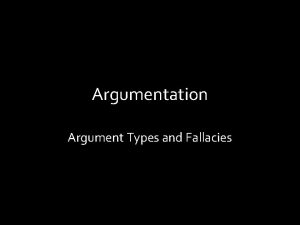Argumentation EVERYTHING IS AN ARGUMENT The Rhetorical Triangle















- Slides: 15

Argumentation EVERYTHING IS AN ARGUMENT

The Rhetorical Triangle by Aristotle Speaker (Ethos) Audience Subject (Pathos) (logos)

What is rhetoric? • The art or study of using language effectively and persuasively. [American Heritage College Dictionary] • “Rhetoric may be defined as the faculty of observing in any given case the available means of persuasion. ” [Aristotle]

Aristotle believed that from the world around them, speakers could: 1. Observe how communication happens 2. Use that to develop sound and convincing arguments.

• Aristotle said that when a rhetor (speaker) begins to consider how to compose a speech, he/she must take into account 3 elements: the subject, the audience, and the speaker. Speaker Audience Subject

Subject The writer/speaker: • evaluates what he/she knows already and needs to know • investigates perspectives (researches) • supports assertions with appropriate evidence

Audience The writer/speaker: • speculates about audience expectations and knowledge of subject • uses own experience and observation to help decide on how to communicate with audience.

Speaker The writer/speaker uses: 1. who they are 2. what they know and feel 3. what they’ve seen and done to find their attitudes toward a subject and their understanding of audience.

Appeals The writer/speaker uses different approaches to influence the audience’s attitude toward the subject. These are: 1. Logos 2. Ethos 3. Pathos

Logos The writer/speaker: • offers clear, reasonable premises and proofs • develops ideas with appropriate details • makes sure readers can follow the progression of ideas.

Ethos The writer/speaker uses it when: • he/she demonstrates that they are credible, good-willed, & knowledgeable and • he/she connects their thinking to the reader’s own ethical or moral beliefs. Audiences and speakers should assume the best intentions and most thoughtful search for truths.

Pathos The writer/speaker: • draws on emotions and interests of readers and • highlights those emotions using 1) personal stories and observations to provoke audience’s sympathetic reaction and 2) figurative language to heighten emotional connections.

“Ask not what your country can do for you - ask what you can do for your country. ” John F. Kennedy • calls attention to ethical qualities of the speaker and listener (ethos) • proposes a solution to the country’s problems by enlisting the citizens’ help (logos) • calls forth emotional patriotism (pathos)

Context and Purpose Context: the situation in which writing and reading occur Purpose: the emerging aim that underlies many of the writer’s decisions

Rhetorical Triangle Plus Speaker Context/Aim Audience Context/Aim Subject
 Everything's an argument 8th edition chapter 1 summary
Everything's an argument 8th edition chapter 1 summary Everything's an argument chapter 17
Everything's an argument chapter 17 Everything's an argument chapter 13
Everything's an argument chapter 13 Rhetorical devices in atticus closing argument
Rhetorical devices in atticus closing argument Synthesis vs rhetorical analysis vs argument
Synthesis vs rhetorical analysis vs argument Ontological argument
Ontological argument Stilistisk term
Stilistisk term Argumentation sanduhr
Argumentation sanduhr Argumentationsanalyse
Argumentationsanalyse Argumentation
Argumentation Interkraniel
Interkraniel These argument beispiel
These argument beispiel Introduction to argumentation
Introduction to argumentation Types of inductive reasoning
Types of inductive reasoning Argumentation
Argumentation Tierversuche argumentation
Tierversuche argumentation


